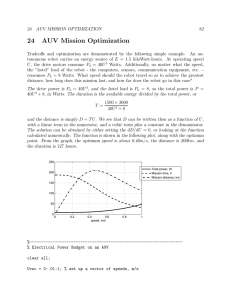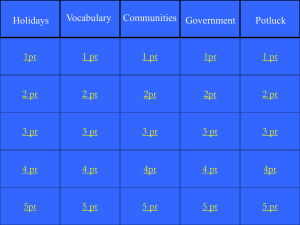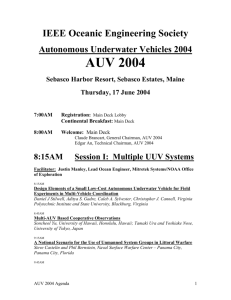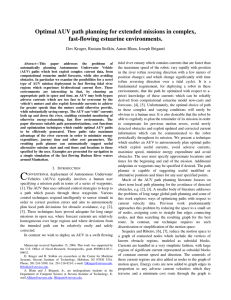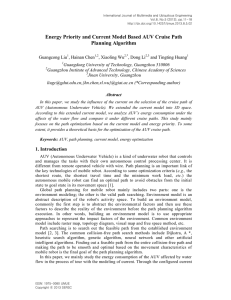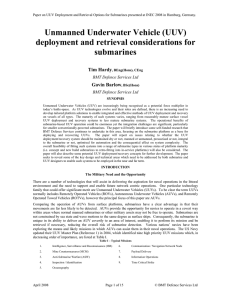Solution to Test 1 - McGill University
advertisement
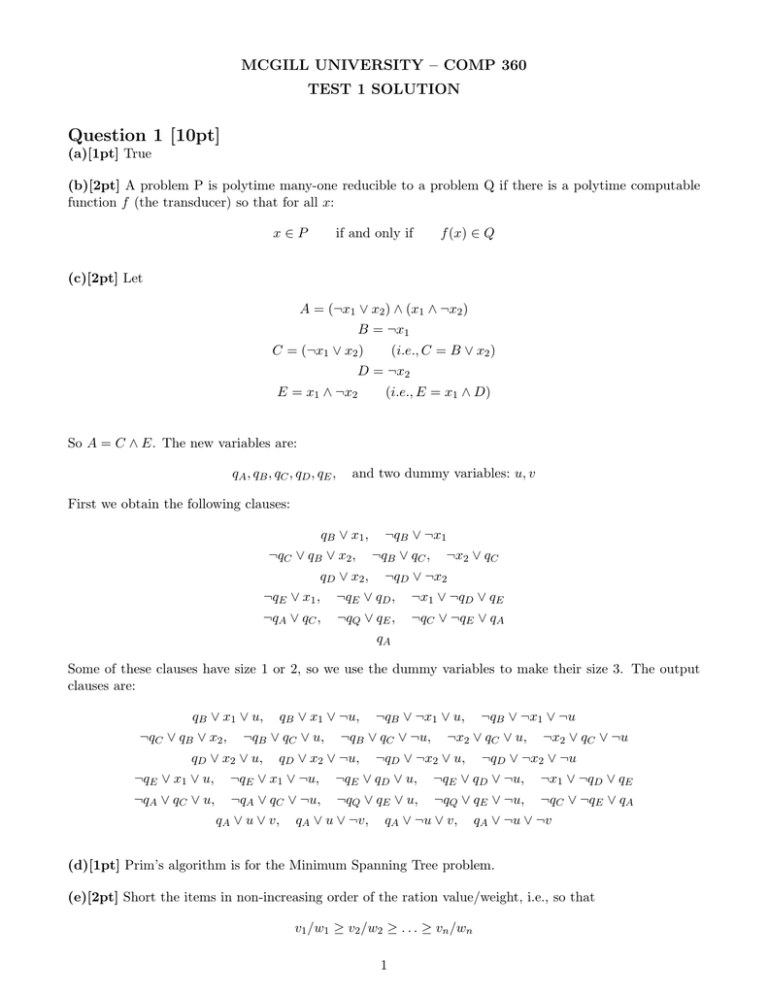
MCGILL UNIVERSITY – COMP 360
TEST 1 SOLUTION
Question 1 [10pt]
(a)[1pt] True
(b)[2pt] A problem P is polytime many-one reducible to a problem Q if there is a polytime computable
function f (the transducer) so that for all x:
x∈P
if and only if
f (x) ∈ Q
(c)[2pt] Let
A = (¬x1 ∨ x2 ) ∧ (x1 ∧ ¬x2 )
B = ¬x1
C = (¬x1 ∨ x2 )
(i.e., C = B ∨ x2 )
D = ¬x2
E = x1 ∧ ¬x2
(i.e., E = x1 ∧ D)
So A = C ∧ E. The new variables are:
qA , qB , qC , qD , qE ,
and two dummy variables: u, v
First we obtain the following clauses:
qB ∨ x 1 ,
¬qC ∨ qB ∨ x2 ,
qD ∨ x 2 ,
¬qB ∨ ¬x1
¬qB ∨ qC ,
¬x2 ∨ qC
¬qD ∨ ¬x2
¬qE ∨ x1 ,
¬qE ∨ qD ,
¬x1 ∨ ¬qD ∨ qE
¬qA ∨ qC ,
¬qQ ∨ qE ,
¬qC ∨ ¬qE ∨ qA
qA
Some of these clauses have size 1 or 2, so we use the dummy variables to make their size 3. The output
clauses are:
qB ∨ x1 ∨ u,
¬qC ∨ qB ∨ x2 ,
qB ∨ x1 ∨ ¬u,
¬qB ∨ qC ∨ u,
qD ∨ x2 ∨ u,
¬qB ∨ ¬x1 ∨ u,
¬qB ∨ qC ∨ ¬u,
qD ∨ x2 ∨ ¬u,
¬qB ∨ ¬x1 ∨ ¬u
¬x2 ∨ qC ∨ u,
¬qD ∨ ¬x2 ∨ u,
¬x2 ∨ qC ∨ ¬u
¬qD ∨ ¬x2 ∨ ¬u
¬qE ∨ x1 ∨ u,
¬qE ∨ x1 ∨ ¬u,
¬qE ∨ qD ∨ u,
¬qE ∨ qD ∨ ¬u,
¬x1 ∨ ¬qD ∨ qE
¬qA ∨ qC ∨ u,
¬qA ∨ qC ∨ ¬u,
¬qQ ∨ qE ∨ u,
¬qQ ∨ qE ∨ ¬u,
¬qC ∨ ¬qE ∨ qA
qA ∨ u ∨ v,
qA ∨ u ∨ ¬v,
qA ∨ ¬u ∨ v,
qA ∨ ¬u ∨ ¬v
(d)[1pt] Prim’s algorithm is for the Minimum Spanning Tree problem.
(e)[2pt] Short the items in non-increasing order of the ration value/weight, i.e., so that
v1 /w1 ≥ v2 /w2 ≥ . . . ≥ vn /wn
1
Let k be the largest index so that
w1 + w2 + . . . + wk ≤ W
If k = n, or k < n and v1 + v2 + . . . + vk > vk+1 , then output the first k items. Otherwise output item
k + 1.
(f )[2pt] Short the edges in non-decreasing order of cost. Keep adding edges in this order to the solution
as long as they don’t create cycle.
Question 2 [10pt]
(a)[5pt] On input (G, k), the output is the following set of requests and k: There is one request denoted
Rv for each vertex v of G. The request Rv consists of all intervals of the form [auv , auv + 1] for all u such
that (u, v) is an edge of G. here auv is an integer such that auv = avu and auv 6= au′ v′ if the set {u′ , v ′ }
is different from the set {u, v}. Here we assume that vertices of G are numbered 1, 2, . . . , n. Then we can
take auv to be
auv = (u + v)2 + uv
It is clear that if auv = au′ v′ then we must have both
u + v = u′ + v ′
and
uv = u′ v ′
Hence it must be that {u, v} = {u′ , v ′ }.
Formally, define
Rv = {[auv , auv + 1] : for all u such that (u, v) 6∈ E}
for auv as above.
(b)[5pt] Observe that if (u, v) is not an edge of G then Ru ∩ Rv = ∅ (so Rv and Ru can be scheduled
together), and if (u, v) is an edge of G then Ru ∩ Rv is the set of one interval [auv , auv + 1] (so Rv and Ru
cannot be scheduled together). Thus K is an independent set of G if and only if the set of requests
{Rv : for v ∈ K}
can be scheduled together.
Consequently, G contains an independent set of size k if and only if at least k requests can be scheduled
together.
Question 3 [10pt]
(a)[5pt] Sort the tasks in non-decreasing order of the parameters ci , and schedule them in this order.
(b)[5pt] Suppose the tasks are sorted in the non-decreasing order of ci , as output by the algorithm:
c1 ≤ c2 ≤ . . . ≤ cn
We show that this is an optimal schedule.
An inversion in a schedule S is defined to be a pair of tasks (i, j) so that ci > cj but i is schedule after
j. Thus the output schedule does not contain any inversion.
First we show that an optimal schedule cannot contain any inversion. To see this, let O be any optimal
schedule, and let C denote its total cost. Suppose for a contradiction that O contains an inversion (i, j).
Let O′ be the schedule obtained from O by swapping these two tasks. Suppose that in O i is executed at
time t and j is executed at time s, where t > s. Then the total cost of O′ is
C − (tci + scj ) + (tcj + sci ) = C − (t − s)(ci − cj )
O′
The total cost of
is less than C because t − s > 0 and ci − cj > 0. This contradicts the fact that O is
an optimal schedule.
Now to show that our schedule S is optimal it remains to show that any two schedules with no inversion
have the same total cost. Note that any such two schedules differ only in the order of tasks that have the
same parameter ci . The same calculation as above showing that swapping two tasks that have the same
parameters does not change the total cost of the schedule. Thus S has the same total cost as any optimal
schedule; therefore it is an optimal schedule.
2

